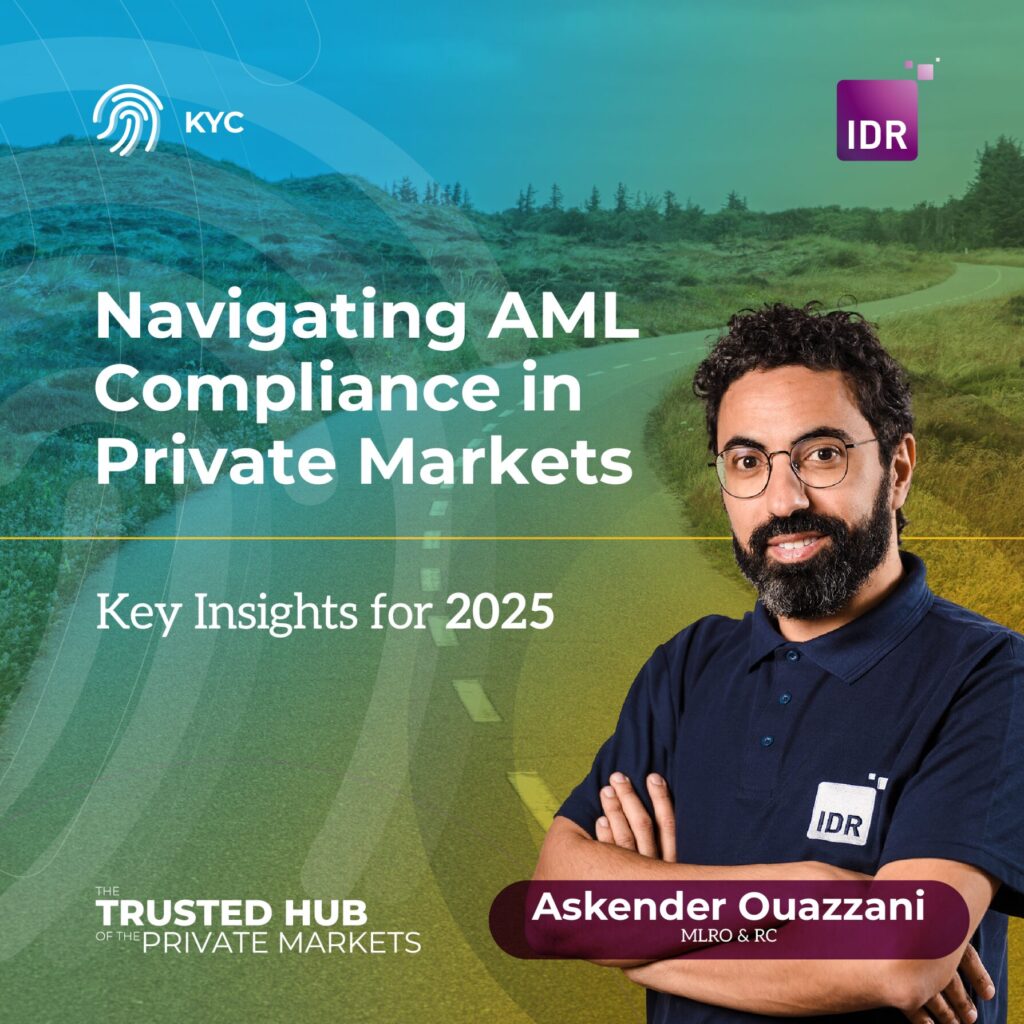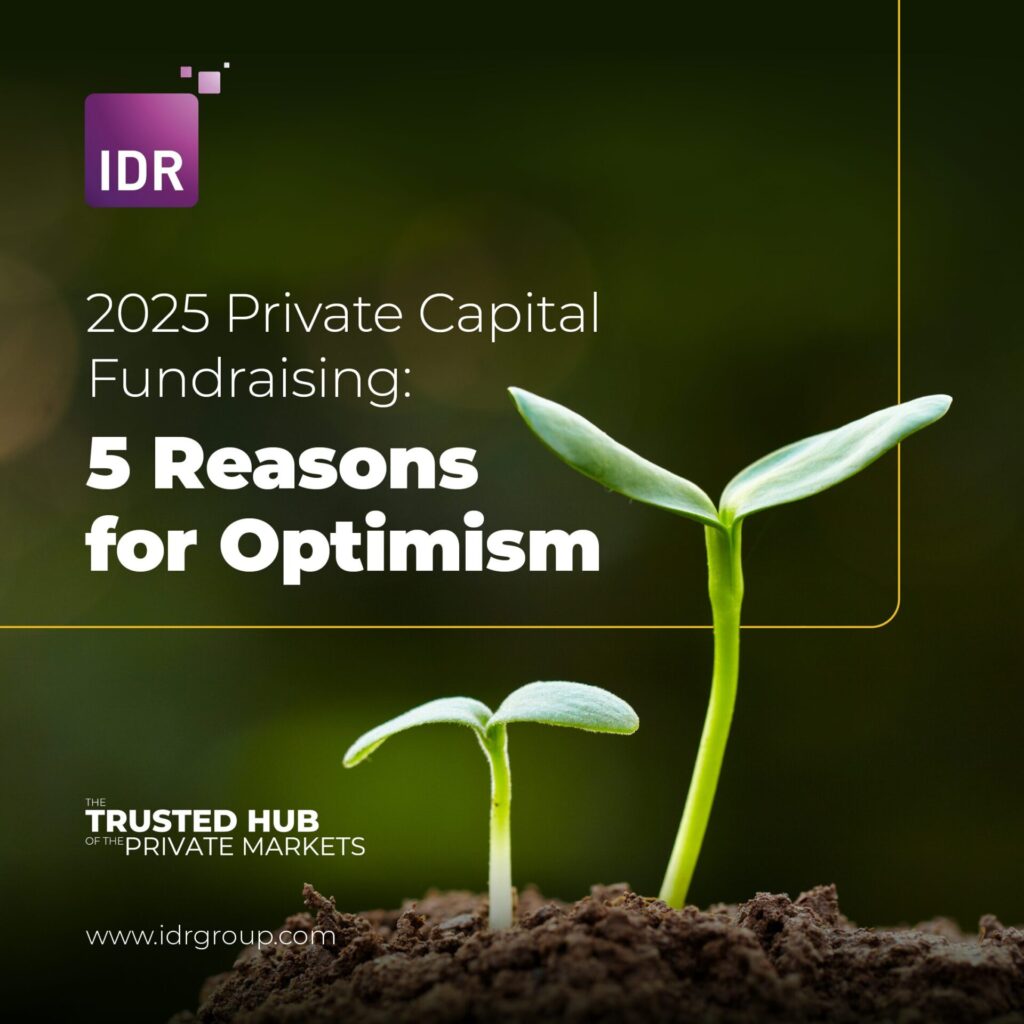On 1 November, private markets fund managers and investors joined FIS and IDR for a webinar on the democratisation of the Private Markets and the impact that this trend is having on investor onboarding and servicing. Dan Kaytes (FIS) Moderated the discussion with panellists Katie Bathgate (Warburg Pincus), Rob Gaskell (TriSpan) and Rory Blazeby (IDR).
Watch the full recording below:
Dan opened the conversation with the outlook for the private markets. Noting, whilst the markets are growing the pace has declined due, in part to a fall in institutional money. This is offset by an inflow of capital from private wealth. Growth from HNWIs will be faster than other sources (according to a report by Oliver Wyman) as these types of investors look for better returns through portfolio diversification. Historically GPs steered away from these smaller commitments due to the overheads and administrative burden associated with investor onboarding. However, advances in technology are addressing these challenges and in doing so paving the way for non-institutional investor access to the asset class.
What are the challenges & opportunities?
There’s an opportunity to tap into a “massive new pool of capital” according to Katie, but challenges exist. These are around whether the (fund) sponsor or administrator has the infrastructure in place to support a large volume of investors, how quickly you can onboard investors as well as other factors like ongoing KYC and FATCA-CRS compliance. “There’s a lot of technology out there to help with this,” she says although also noted it falls short of the mark in handling the growing number of ad hoc requests from investors. Finding ways to service these is a consideration for fund managers wishing to offer a ‘white glove’ service.
Rob mentioned that the rise of retail investors looking for private markets exposure meant the main challenge they faced wasn’t attracting capital as they’d first expected. “We’re such a new fund…. our biggest challenge was not having access initially to institutional clients. Our only option was to target non-institutional clients but it’s a lot more operationally intensive.” For TriSpan, part of managing this is working with outsourcing partners who understood their high-volume investor population. For example, Rob said, “Partnering with IDR has led to a smooth onboarding and KYC process.”
“Investor experience drives everything”
“Investor experience drives everything,” said Rob. “We work hard to ensure our subscription documents are clear and easy to complete because we’re not working with institutional investors. We’re looking to build best in class online portal, want them to be able to get answers to questions, self-service, move to online subscriptions and make things smoother and smoother.”
A white glove experience is key to Warburg Pincus, when it comes to managing and engaging with investors. “Investor experience is extremely important,” said Katie. Part of this is moving the subscription process online with more “intuitive” subscription documents that reduce the frustration associated with sending documents back and forth, and in particular “streamlining subscription documents and KYC requirements are key.” Echoing Rob’s earlier comments, Katie said, “this population of investors is not as familiar as institutional investors with those requirements so having someone they can call up and ask questions to, is extremely important to us.” From his experience of working with IDR’s 300+ fund manager client base Rory noted “how to maximise and meet the expectations of investors, particularly as that number grows tends to be front and centre of GP’s concerns. “The common denominator here is that investor experience is critical,” he said.
“A manual onboarding process does not work at every level”
Dan shared an admin client’s experience during a recent fundraise where 80% of the subscription documents had errors as one of the problems arising from the existing method of investor onboarding.
Alongside inefficient subscription Rory went on to highlight other pain points that tend to crop up. These include managing more investor relationships, control and security of data, regulatory risks posed by poor KYC practices and higher operational costs. “A manual onboarding process does not work at every level,” he said.
How has a more digital approach been received by investors?
“The feedback has been excellent, even better than we thought it would be. It’s easier to follow, it’s more secure. They’ve been really happy with it,” said Katie. But she noted that the real value is still to come when investors come back and commit to the next fund. Rob said they’d gone “online only for the KYC piece and we’ve not had any complaints.”
Security concerns with a tech-based approach
Speaking about concerns Rob noted security is the most commonly asked question. “Investors want to know about your cyber security policy and due diligence measures. They also want to see a professional looking platform.”
Rory said that whilst there can be resistance to change it comes down to the question of “what’s more risky – using a digital platform or sending stuff via email?” Investors can find it a bit challenging to provide information through a portal but ultimately a tech front-end with a managed service to provide support through the process provides comfort and acts as a good middle ground.
Is a digitised onboarding process a competitive advantage?
The general consensus amongst the panel was that whilst not a deal breaker, it certainly helps. According to Katie it’s not “make or break” – performance, strategy and other factors are more important. “A smooth onboarding process is key to keeping investors and keeping them happy.” Similarly, Rob noted that “the onboarding process won’t help you to close the deal…but a poor experience means you could lose that investor… and that’s not a conversation you want to be having with the CEO.” The increasingly complex regulatory environment has also made a tech-based approach an advantage. Speaking about the Russian sanctions introduced earlier this year, Rob said, “because of how we used technology since inception we were quickly and easily able to that say we didn’t have any Russian touchpoints which meant…. we had the confidence to be able to know that, without having a team of people to scour through thousands of historical documents.”
“Keeping our foot on the gas is key”
In terms of the next areas to tackle to continue to enhance investor experience in the private markets Katie highlighted bespoke and ad hoc investor requests as “an area that’s going to take a bit longer.” She noted whilst some technology was in place greater adoption was needed. Looking at the non-institutional space, “their experience with their public markets investments is probably most likely better when it comes to onboarding and reporting,” said Rory. He sees this increasing the pressure on private markets fund managers to improve areas like transparency and access. In line with Katie’s comments, Rory sees adaptable technology to meet the requirements of individual investors as another important area when it comes to continuing to deliver the right investor experience. Moving subscription documents online is next according to Rob.
Beyond this “the big challenge is making sure we know what’s out there, what are the new tools, processes, systems and technologies…. keeping our foot on the gas is key.”

